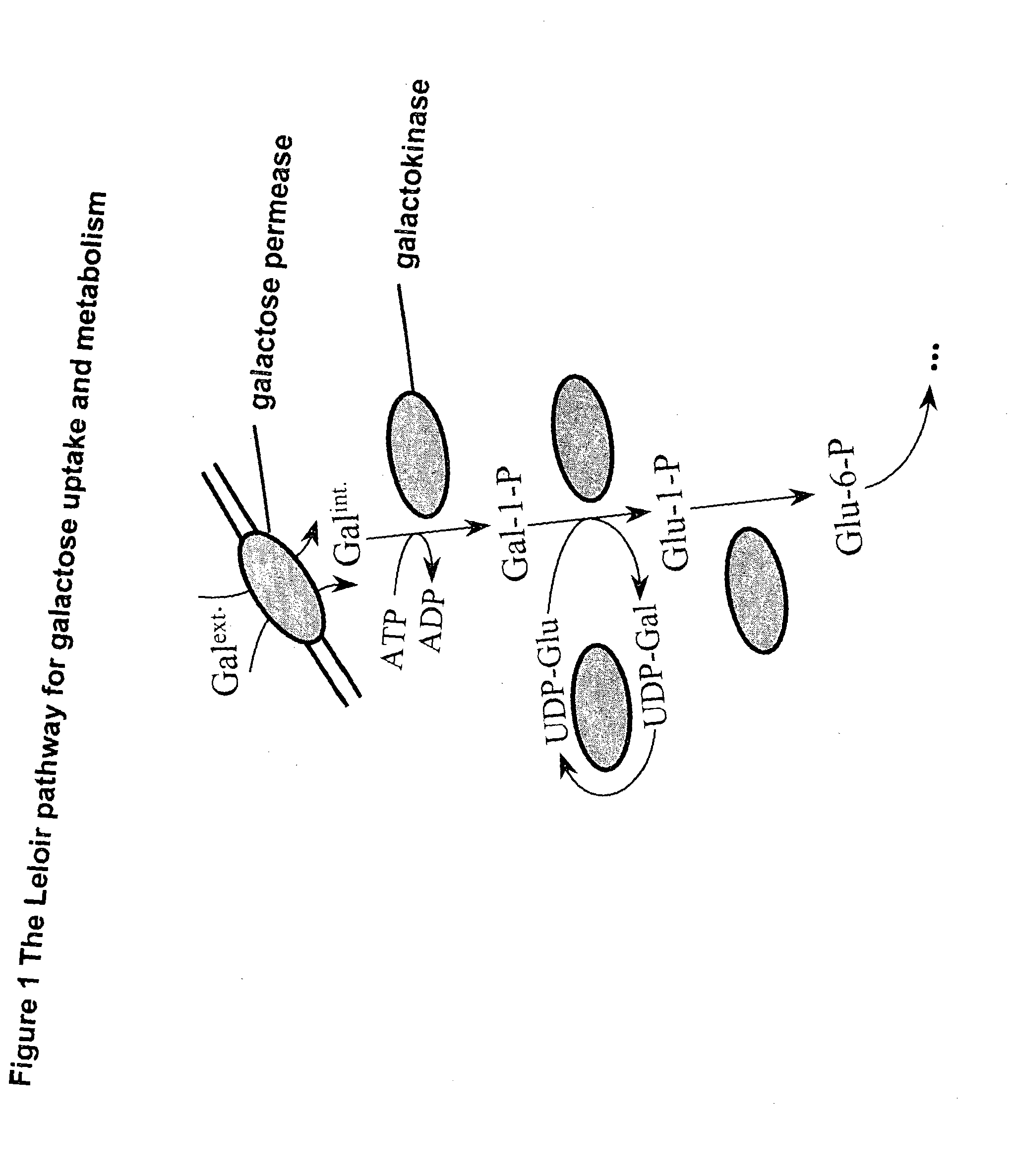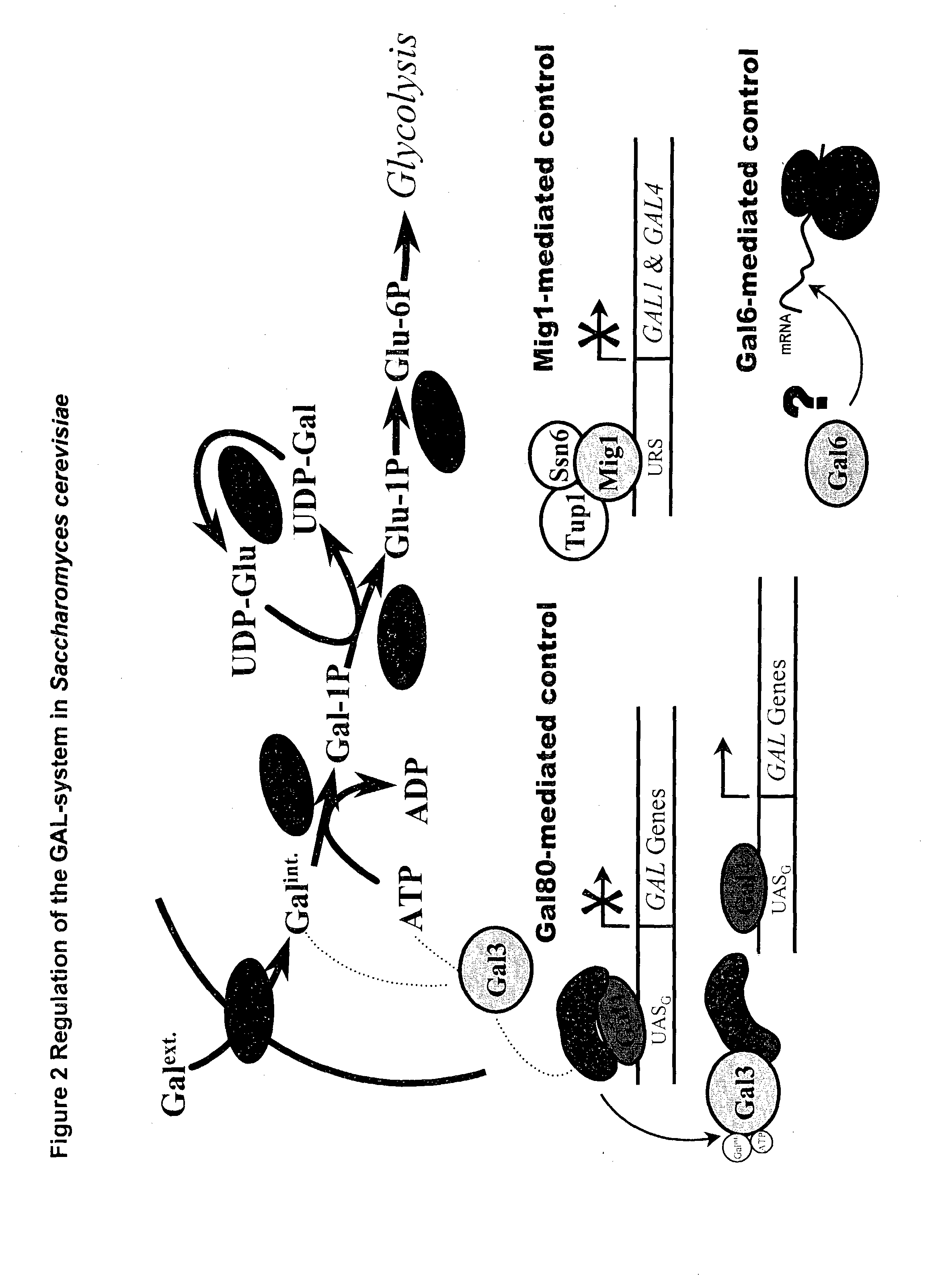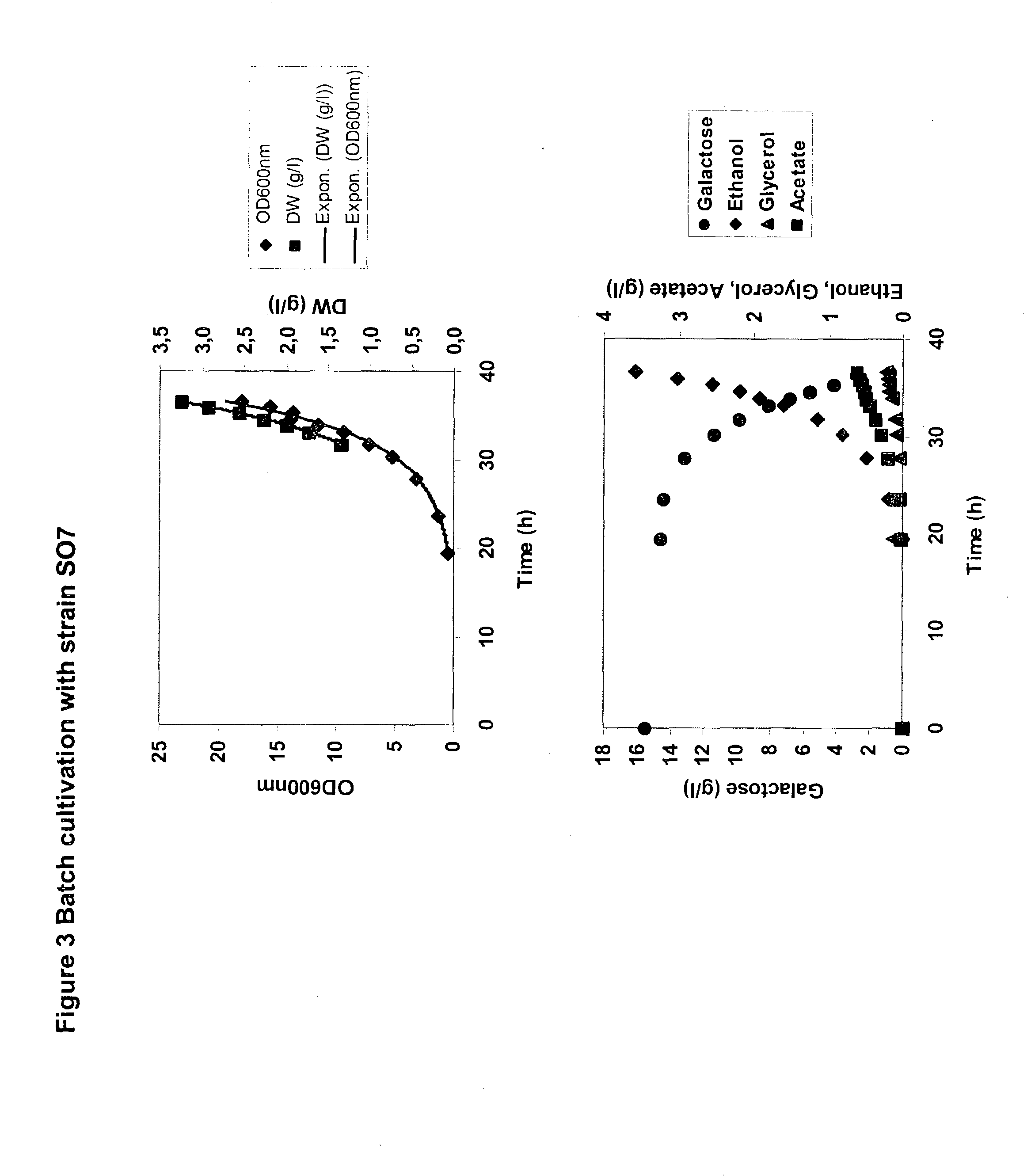Metabolically engineered micro-organisms having improved galactose uptake
a technology galactose, which is applied in the field of metabolic engineered microorganisms having improved galactose uptake, can solve the problems of slow galactose uptake rate, unable to modulate flux through individual enzyme activity, and unable to achieve the effect of amplification of individual enzyme activity
- Summary
- Abstract
- Description
- Claims
- Application Information
AI Technical Summary
Problems solved by technology
Method used
Image
Examples
example 1
Construction of Yeast Strains
[0027] All S. cerevisiae strains used were generated from the CEN.PK113-7D (MATa) wild type strain (van Dijken et al. 2000). SO7 containing the 2μ high-copy vector pBM959 with GAL4 behind its native promoter and URA3 as marker and SO16 (gal80, mig1, gal6) were constructed by Ostergaard and co-workers (Ostergaard et al., 2000). The PGM2 strain overexpressing PGM2 was constructed by transforming CEN.PK113-SD (ura3) with the 2μ high-copy vector pPGM2 (Masuda et al., 2001) containing PGM2 behind the PMA1 gene promoter and URA3. Strains were stored at −80° C. in 20% (v / v) glycerol. These frozen stocks were used for obtaining single colonies on plates with a selective minimal medium for inoculation of precultures.
example 2
Batch Cultivations of WT, SO7 and SO16
[0028] The S. cerevisiae strains either overexpressing GAL4 (SO7) or deleted in GAL6, GAL80 and MIG1 (SO16) and the corresponding reference strain CEN.PK113-7D (WT) were examined under controlled conditions in aerobic batch cultivations on a minimal media with a start concentration of 15 g / l galactose. All the strains were prototrophic thereby avoiding addition of various amino acids that could affect transcription of amino acid related genes. Cultivations of all strain were done in triplicates and samples for DNA arrays were harvested at a residual galactose concentration of 7.5±2.0 g / l.
[0029] The batch cultivations were carried out in well-controlled laboratory fermenters with a working volume of 2 or 4 litres. A defined medium (Verduyn et al., 1992) was used, which contained per litre: 15 g galactose; 5.0 g (NH4)2SO4; 3.0 g KH2PO4; 0.5 g MgSO4, 7H2O; and trace metals and vitamins as described by Verduyn et al. (1992). 50 μl / L antifoam (Sigm...
example 3
Genome-Wide Transcription Analysis
[0035] Oligonucleotide microarrays from Affymetrix containing sequences for all know ORFs in S. cerevisiae were used for genome-wide expression analysis during batch cultivations with the strains SO7, SO16 and WT.
[0036] To find genes, which had changed expression in at least one of the two mutants an ANOVA analysis was performed on the 5963 probe sets representing ORFs in S. cerevisiae that were called present on at least one array. Only 24 ORFs showed a significantly changed expression in at least one of the two mutants when using a global likelihood of getting 1 false positive (cutoff at P=1.68·10−4), and most of these ORFs had only changed expression in the GAL4 overexpression strain. The 30 best scoring genes in the ANOVA test are shown in the table below.
Fold changeaORFFunctionSO7SO16P-valuebYGL157WUnknown3.7−1.53.53E−08YEL021WURA3Pyrimidine5.2−1.25.66E−07biosynthesisYPL248CGAL4Galactose regulation231.35.95E−07YBR298CMAL31Maltose metabolism...
PUM
| Property | Measurement | Unit |
|---|---|---|
| concentration | aaaaa | aaaaa |
| volume | aaaaa | aaaaa |
| volume | aaaaa | aaaaa |
Abstract
Description
Claims
Application Information
 Login to View More
Login to View More - R&D
- Intellectual Property
- Life Sciences
- Materials
- Tech Scout
- Unparalleled Data Quality
- Higher Quality Content
- 60% Fewer Hallucinations
Browse by: Latest US Patents, China's latest patents, Technical Efficacy Thesaurus, Application Domain, Technology Topic, Popular Technical Reports.
© 2025 PatSnap. All rights reserved.Legal|Privacy policy|Modern Slavery Act Transparency Statement|Sitemap|About US| Contact US: help@patsnap.com



